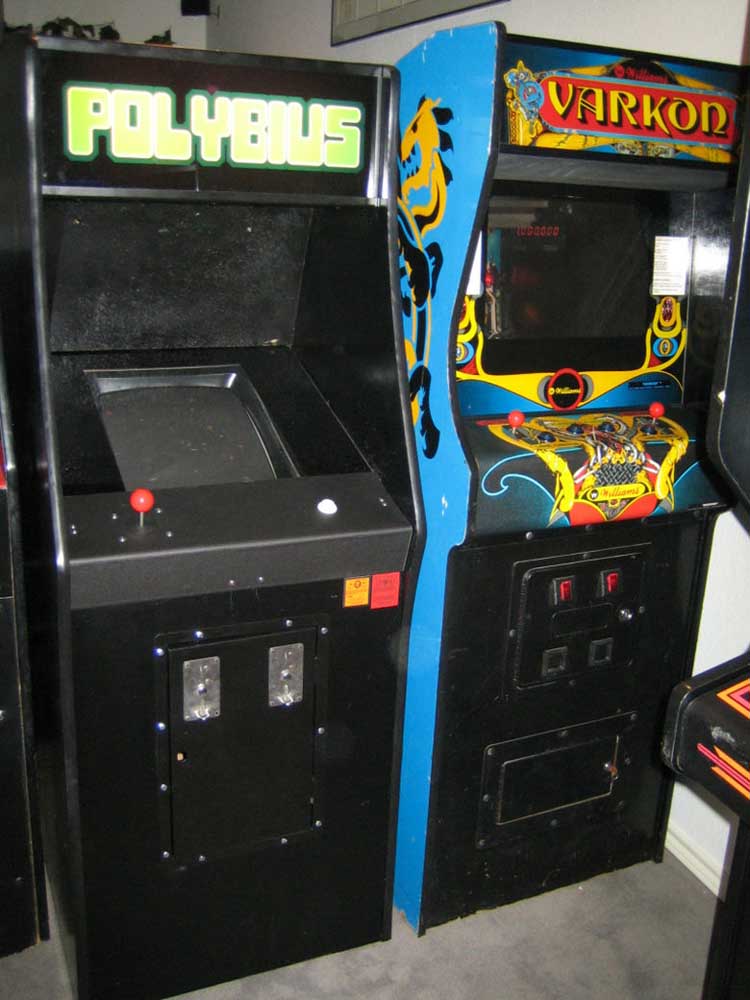Sinister video game likely just a myth
Published 12:00 am Wednesday, February 8, 2017

- Rogue Synapse created this mockup of the “Polybius” video game.(DocAtRS/Wikimedia/Submitted photo)
It’s a scenario that would have chilled the blood of any parent of a teenager in the early 1980s:
One day when the Beaverton Mall opens for business, there’s a new coin-op video game cabinet tucked into the back recesses of the video arcade by Sunrise Photo. It’s made by a computer company nobody’s ever heard of before — a German outfit called “Sinneslöschen.”
Soon the kids are lining up to play the new, hypnotic game. They play as long as they can, as long as their supply of quarters holds out, and afterward stumble off through the mall in a trancelike state, sometimes even unable to remember their names and home addresses.
It soon becomes clear that Sinneslöschen isn’t a computer company at all, but a shadowy military-technology group. And the game isn’t a game at all, but some kind of behavior-modification tool developed for an intelligence agency — the CIA, perhaps — or, worse, the KGB. The game bores into the players’ minds like a worm, leaving them helpless as heroin addicts. They can’t remember their phone numbers, they can’t remember who their parents are — but they always remember their way back to the tall, sinister black cabinet with the electric-green letters across the top that read, “POLYBIUS.”
Every day or two, sinister-looking men in black suits and opaque Foster-Grant sunglasses appear in the arcade, pushing their way through the crowds of zombie children, inspecting the high-score chart and copying down information from a special output screen. Then, without a word to anyone, they disappear.
Then one day, a week or two later, just as dozens of parents are wondering what they have to do to save their children, a whole crew of the men in black appears at the arcade. Shooing away the crowds of disappointed zombie children, they load the machine on a hand truck and wheel it away. No one ever sees it, or them, again.
So ends the legend of “Polybius,” the mysterious mind-controlling video game.
The urban legend of “Polybius” is set in Oregon. According to the story, these mysterious game cabinets were deployed in a tiny handful of obscure video arcades in the suburbs of Portland and used to test video game-delivered mind control algorithms. When their effect on local kids got too obvious to keep a lid on, the experiment was halted and the mysterious agents picked the games up and disappeared with them.
There remains a possibility — a tiny one, really too small to measure — that the legend is true. But none of the vast crowds of children, or their parents, has ever come forward, and the name of the company — Sinneslöschen, apparently a clumsy portmanteau of two German words meaning “senses” and “erase” — is a dead end.
“What H.P. Lovecraft’s Necronomicon is for books, ‘Polybius’ is for video games,” writes Portland historian Joe Streckert. “The legendary creation is a character in and of itself, and any hapless humans curious enough to open its pages (or press its start button) will soon find their minds warped by the secrets contained therein.”
The legend of “Polybius” doesn’t appear in any written records until about 17 years after it supposedly happened, in a 1998 forum post on the coinop.org website. The anonymous poster claimed to have discovered the games’ operating software and recapped the zombie-players-and-men-in-black story.
After that, the story bounced around here and there on the internet for a few years before getting picked up (and thoroughly debunked) by the online myth-busting site Snopes.com. And after that, suddenly “Polybius” was all over the internet.
Several different people, with varying degrees of noncredibility, stepped forward to claim involvement in the darksome game. Several other people built fake versions of the game and tried to pass them off as the real thing. And one joker even built a fake website for Sinneslöschen, the shadowy German company that supposedly made it.
But “Polybius” probably hit its pop-culture peak when a “Polybius” cabinet appeared on an episode of “The Simpsons” — the episode titled “Please Homer Don’t Hammer ’Em,” from September 2006. It has the words “PROPERTY OF U.S. GOVERNMENT” stenciled on its front.
Ultimately, “Polybius” is a fun sort of legend — the kind of thing that’s almost, but not completely, certain to be untrue. But, like the tall tales of waterfront smuggler-shanghaier Bunco Kelley and the equally unlikely legends of lost gold mines and buried pirate loot, its contribution to Oregon’s history is not much diminished by the fact that it’s most likely fiction.
(Sources: Streckert, Joseph. The Legend of Polybius (Kindle Edition). Portland: Amazon, 2015; Dunning, Brian. “Polybius: Video Game of Death,” Skeptoid Podcast, Ep. 362, 5-14-2013)
Finn J.D. John teaches at Oregon State University and writes about odd tidbits of Oregon history. For details, see http://finnjohn.com. To contact him or suggest a topic: finn2@offbeatoregon.com or 541-357-2222.









